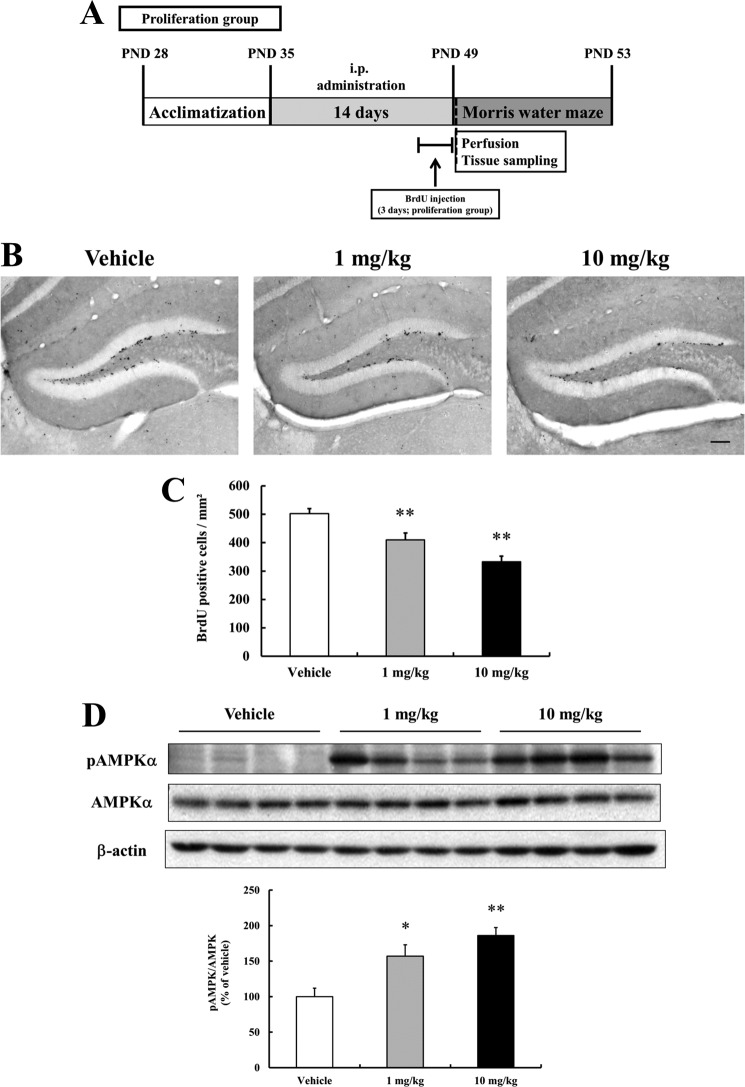FIGURE 3.
Resveratrol decreases the proliferation of newly generated cells in the dentate gyrus of the hippocampus. Mice treated with vehicle or resveratrol for 14 days were administered BrdU on days 12–14 of resveratrol administration. The mice were euthanized on day 15 and brain tissue sections were processed for BrdU immunostaining. A, schematic overview of the in vivo experimental procedure. C57BL/6 mice (5-week-old) were intraperitoneal administered vehicle or resveratrol was administered for 14 days. BrdU pulses were given the last 3 days of vehicle or resveratrol treatment. B, representative images showing BrdU-positive cells in the dentate gyrus. Scale bar, 100 μm. C, analysis of numbers of BrdU-positive cells in the dentate gyrus. Representative hippocampal sections (8–10) were chosen and immunostained with BrdU-specific antibodies. The analysis showed fewer newly generated cells in the dentate gyrus of animals treated with resveratrol. Values are as the mean ± S.E. (n = 5 mice/group). **, p < 0.01 versus the vehicle (ANOVA with Fisher's PLSD procedure). D, mice were administered either vehicle or resveratrol for 14 days. Mice were then euthanized and hippocampal tissue lysates were prepared. Tissue extracts were subjected to Western blotting for phosphorylated AMPKα (Thr-172), AMPKα, and β-actin. Resveratrol was found to activate AMPKα in the hippocampus. β-Actin was used as a protein loading control. A representative blot from three independent experiments that yielded similar results is shown.

